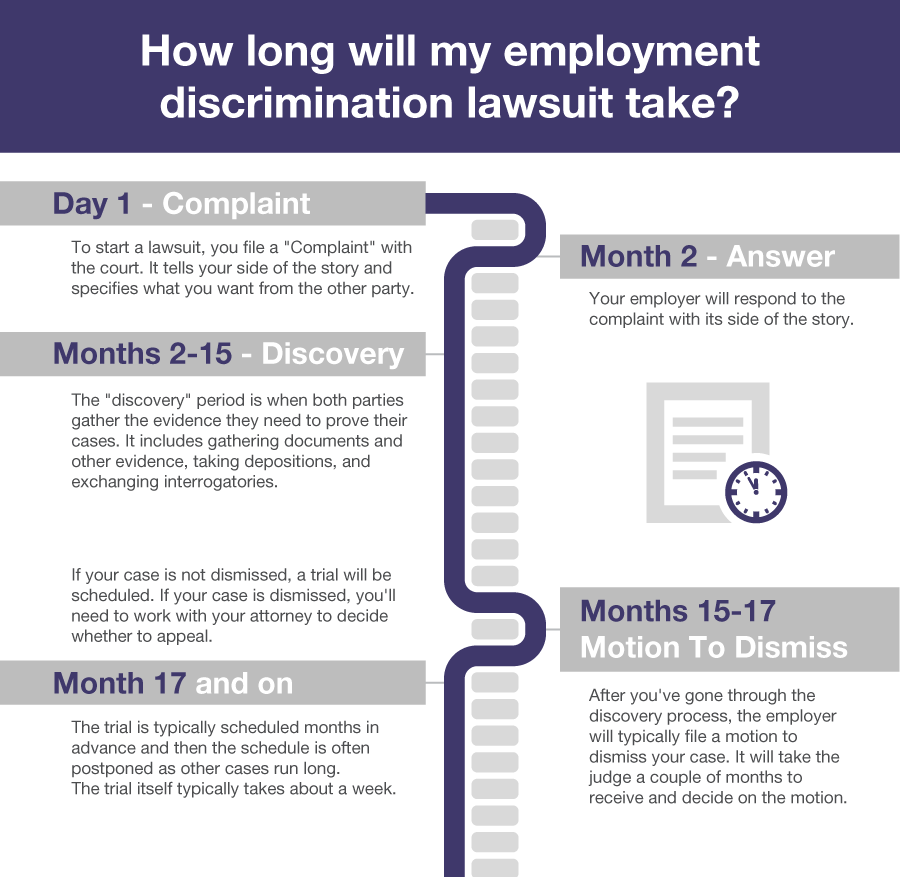an employment discrimination lawsuit involves several steps. Here is a detailed explanation of each step
Consultation with an attorney
The first step is to consult with an experienced employment discrimination attorney. They will evaluate your case, assess the strength of your claims, and provide legal advice on the best course of action.
Gathering evidence
It is crucial to gather evidence to support your claims of employment discrimination. This may include documents such as employment contracts, emails, performance evaluations, witness statements, and any other relevant evidence that demonstrates discriminatory practices.
Filing a complaint with the appropriate agency
Before filing a lawsuit, you may need to file a complaint with the appropriate government agency, such as the Equal Employment Opportunity Commission (EEOC) in the United States. This step is often required to exhaust administrative remedies before proceeding to court. The agency will investigate the complaint and may attempt to mediate a resolution between the parties.
Obtaining a “right to sue” letter
If the agency investigation does not result in a resolution or if the agency is unable to resolve the matter within a certain timeframe, they will issue a “right to sue” letter. This letter grants you the permission to file a lawsuit in court.
Drafting the complaint
With the assistance of your attorney, you will draft a complaint outlining the details of your case. The complaint typically includes information about the parties involved, a statement of facts, the legal basis for the claim, and the relief sought.
Filing the lawsuit
Once the complaint is prepared, it must be filed with the appropriate court. Your attorney will ensure that the complaint is filed within the statute of limitations and in the correct jurisdiction.
Serving the defendant
After filing the lawsuit, the defendant (usually the employer) must be served with a copy of the complaint and a summons. This is typically done by a process server or a sheriff’s deputy.
Discovery
Discovery is the process where both parties exchange relevant information and evidence. This may involve written interrogatories, requests for documents, depositions, and other methods of obtaining information to build the case.
Pre-trial motions
Before the trial, both parties may file various motions, such as motions to dismiss or motions for summary judgment, to resolve certain legal issues or narrow the scope of the case.
Settlement negotiations
Throughout the litigation process, there may be opportunities for settlement negotiations. Parties may engage in mediation or settlement conferences to try and reach a resolution without going to trial.
1
Trial
If the case does not settle, it will proceed to trial. During the trial, both parties present their evidence, call witnesses, and make arguments to the judge or jury. The judge or jury will then make a decision on the case.
1
Appeals
If either party is dissatisfied with the trial outcome, they may have the option to appeal the decision to a higher court. The appellate court will review the trial record and determine if any legal errors were made that warrant a new trial or a different outcome.
